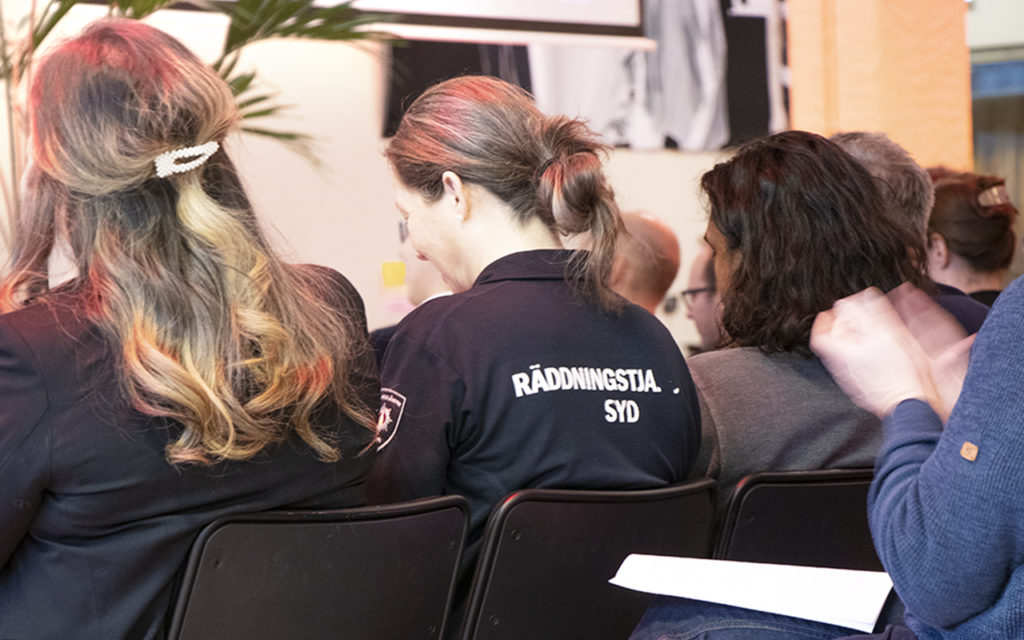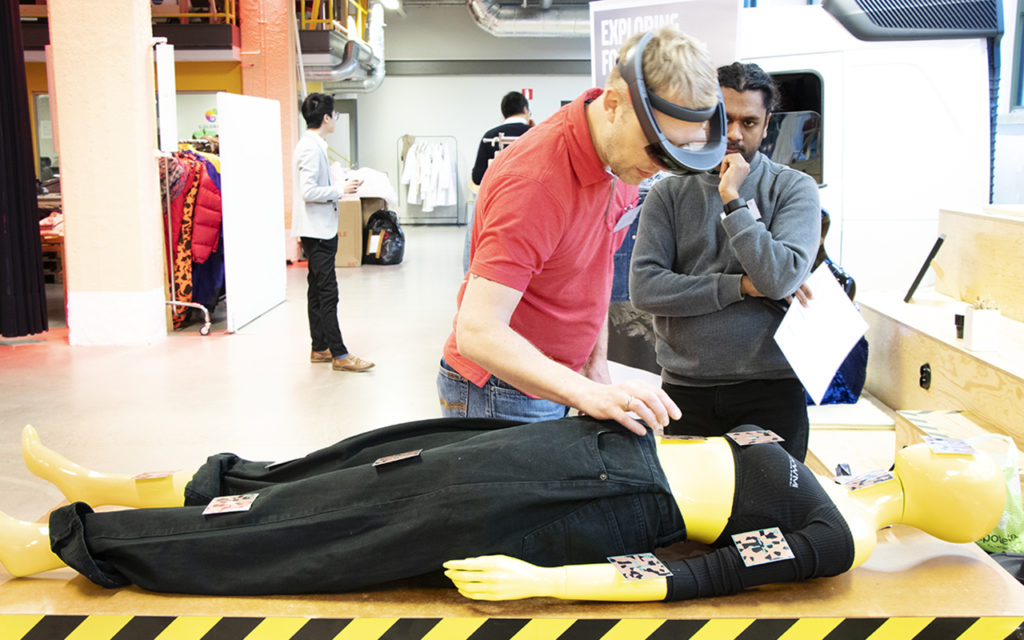First responders and innovators looking to Smart Textiles
Smart Textiles hosted a day-long meeting where the First Responders 2.0 collaborative project brought together organizations and innovators from different parts of Sweden at the DO-tank Center in Borås. The participating companies presented new and exciting technologies to help meet the future needs and challenges facing first responders.

WIN Guard is behind the project, which is largely funded by the Swedish Civil Contingencies Agency (MSB). Its primary mission is to bring together
WIN Guard is behind the project, which is largely funded by the Swedish Civil Contingencies Agency (MSB). Its primary mission is to bring together the private sector with the public sector to find future solutions for more effective rescue efforts and to make work environments safer. Johan Persson, project manager for WIN Guard, feels that the initiation of the project is an important source of inspiration for the participating organizations.
“By bringing organizations and companies together, we create unique opportunities to exchange knowledge and find innovative solutions,” he explains.
Smart Textiles provides a large part of the development for medical applications and is conducting successful research in the field with a focus on textiles and clothing. Nils-Krister Persson, assistant professor and head of Smart Textiles Technology Lab, was one of the speakers who emphasized the importance of collaboration with those working in the medical field.
“Today, our clothing is more important than ever, not only in how they are used in daily life but also in potential areas of use, particularly in medicine. They protect us from the outside world and its challenges but could also monitor and provide support functions with the help of sensors. Meetings like this help us develop collaboration that allows us to focus research and create a safer and better work environment,” he says.

In addition to all the interesting presentations from both innovators and first responders, there were also opportunities to see, feel, and even try on some of the solutions that have been developed. Erik Elvermark from Stockholm’s Fire Services tested a new form of training for first aid with a doll that incorporates augmented reality (AR), a virtual training simulation, that the company HeroSight has developed.
“Even if the technology is not fully developed, I can really see the potential for it considering the huge need. Today’s training often uses actors that use make-up to simulate injuries as realistically as possible. But this solution would allow us to train many more people in a shorter amount of time.”
You can hear Nils-Krister Persson describe how technology in a sock can predict a fall in a radio interview on P4 Sjuhärad Swedish Radio from the day of the event. Note that this interview is in Swedish.

